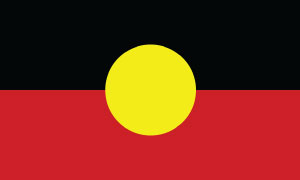January 2024: Pre-budget submission 2024-25
Community Legal Centres Australia has made a submission to Treasury ahead of the May 2024-25 Federal Budget.
Read the Community Legal Centres Australia 2024 pre-budget submission here, or read on for a summary.
Delivering access to justice is critical to Measuring What Matters
The Commonwealth Government’s recent Measuring What Matters statement makes a commitment to building healthy, secure, cohesive and prosperous communities for everyone. ‘Access to justice’ is named as part of this commitment. Like government, the community legal sector recognises that legal, social, health-related, and economic determinants of wellbeing are interconnected, and that achieving access to justice and security for people and communities involves addressing the root causes of legal problems.
In response, community legal centres offer more than just legal advice and assistance. Our services are trauma-informed, integrate a range of diverse professional supports (social work, counselling, community development), are delivered within a range of settings (health centres, hospitals, domestic violence and homeless shelters, and prisons), and prioritise prevention and early support through systemic advocacy and community legal education. However, chronic underfunding, inflationary pressures combined with inadequate indexation, and a lack of long-term funding security, is putting our unique service model and contribution to increasing individual and community wellbeing at risk.
Funding for legal assistance is an investment in people and communities, but the legal assistance sector in Australia is woefully underfunded.
Funding for legal assistance is an investment in people and communities. Research shows that every dollar invested in legal assistance delivers many dollars’ worth of benefits to clients, communities, and governments.3 More importantly, our services keep people in jobs and homes, and out of debt, hospitals, courts, and prisons. We support people to remove the legal barriers keeping them from living their best lives.
The legal assistance sector in Australia is woefully underfunded. This hurts people and communities, and costs governments. Over the past decade, multiple comprehensive national surveys, inquiries, and reports have found consistent high (and increasing) levels of unmet legal need across this country.
Legal assistance providers, including community legal centres, Aboriginal and Torres Strait Islander Legal Services (ATSILSs), Family Violence Prevention Legal Services (FVPLSs) and Legal Aid Commissions (LACs), cannot meet anywhere near existing levels of legal need on current resources.
Community-based legal assistance providers, including community legal centres, FVPLSs, and ATSILSs, face several unique and greater risks. Inflationary pressures, underfunding, and a lack of long-term funding security, is putting our unique service model, and contribution to increasing individual and community wellbeing, at risk.
The Community Legal Centres Australia submission contains six recommendations for the Commonwealth government in relation to the May 2024 budget:
- Adequate indexation (at least 4.6%) on all NLAP funding contracts with community legal centres, including for baseline funding, Family Law Family Violence funding, and all other Commonwealth legal assistance funding delivered via NLAP. This will assist centres to absorb the impacts of inflation and increasing wages costs. Our best estimate is that this will cost $5.5m in 2024-25.
- Sufficient additional legal assistance funding to enable community legal centres, Aboriginal and Torres Strait Islander Legal Services, and Family Violence Prevention Legal Services to offer wages parity with Legal Aid Commissions. Community-based legal assistance providers are experiencing a workforce crisis, with enduring unfilled vacancies threatening service provision. The specific amount required to deliver wages parity across the legal assistance sector should be determined according to recommendations made by the NLAP Review.
- $5 million in the 2024-25 financial year for community legal centres to embrace and transition to modern, efficient information, communications, and data technology (ICDT) systems. Centres are currently struggling with an ageing and inefficient data reporting system known as CLASS. Ever-increasing demands by governments at all levels for more and better data, combined with increasing cyber security threats and changing privacy laws, make the sector’s need for support to adopt sophisticated, efficient, and secure modern Information, Communications, and Data Technology (ICDT) systems increasingly urgent.
- An immediate injection of new funding into the legal assistance sector to support service delivery until the current NLAP expires in June 2025. This injection should be of such a scale as to enable the legal assistance sector to make significant headway in responding to unmet legal needs. Over five years ago, the Law Council of Australia recommended an increase of $390 million in government funding to legal assistance services to address unmet legal need, and since then legal need has only grown. In its submission to the NLAP Review, the Law Council revised its estimate of the current shortfall in legal assistance funding upwards to $500 million per annum. The NLAP Review’s recommendations should also be considered.
- At least $124.5 million in additional funding for community legal centres for the 2024-25 financial year. This represents a doubling of the Commonwealth NLAP funding Community Legal Centres Australia estimated to be in the community legal centre service system in 2023-24. Commonwealth Government funding delivered to community legal centres via non-NLAP funding streams must also be doubled and adequate indexation applied.
- A commitment (via the forward estimates) to invest significant additional Commonwealth funds in the next NLAP (due to commence from 1 July 2025). This commitment should identify the proportion of funding to be allocated to community legal centres to provide certainty to centres and enable states and territories to commence community legal sector tendering processes early.
You can read previous budget statements below:


